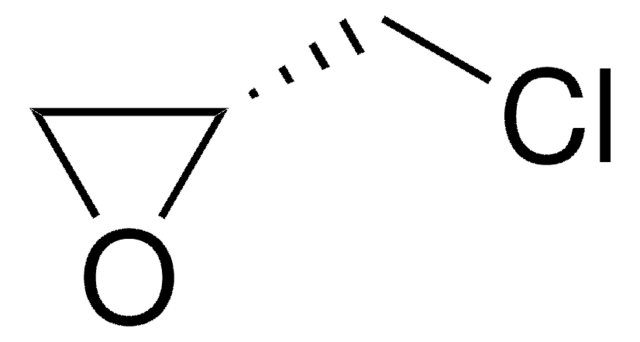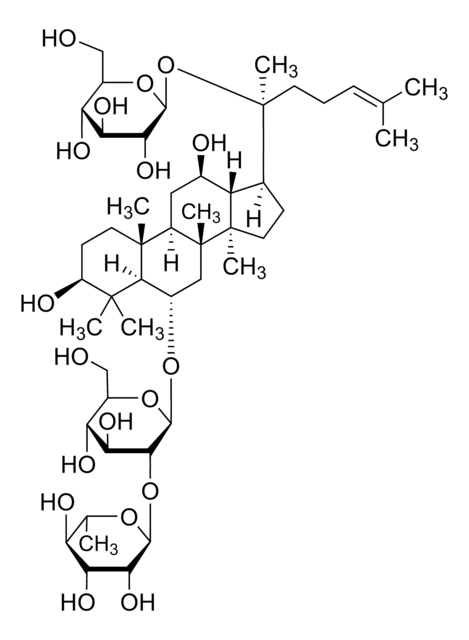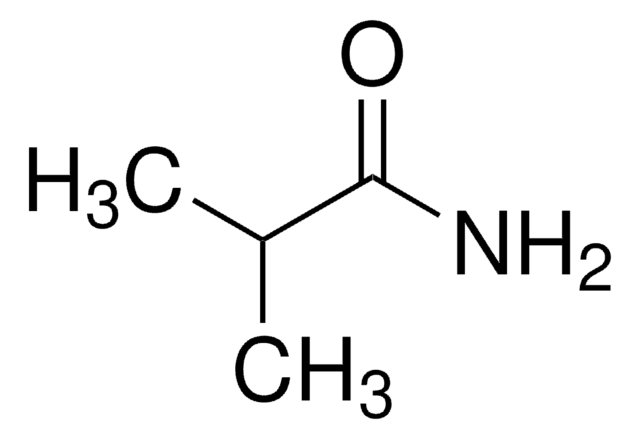02578
(±)-Epichlorhydrin
analytical standard
Synonym(e):
(±)-2-(Chlormethyl)oxiran, 1-Chlor-2,3-epoxypropan
About This Item
Empfohlene Produkte
Qualität
analytical standard
Qualitätsniveau
Dampfdichte
3.2 (vs air)
Dampfdruck
13.8 mmHg ( 21.1 °C)
Assay
≥99.9% (GC)
Selbstzündungstemp.
779 °F
Haltbarkeit
limited shelf life, expiry date on the label
Expl.-Gr.
21 %
Methode(n)
HPLC: suitable
gas chromatography (GC): suitable
Brechungsindex
n20/D 1.438 (lit.)
n20/D 1.438
bp
115-117 °C (lit.)
mp (Schmelzpunkt)
−57 °C (lit.)
Dichte
1.183 g/mL at 25 °C (lit.)
Anwendung(en)
cleaning products
cosmetics
environmental
food and beverages
personal care
Format
neat
SMILES String
ClCC1CO1
InChI
1S/C3H5ClO/c4-1-3-2-5-3/h3H,1-2H2
InChIKey
BRLQWZUYTZBJKN-UHFFFAOYSA-N
Suchen Sie nach ähnlichen Produkten? Aufrufen Leitfaden zum Produktvergleich
Allgemeine Beschreibung
Anwendung
It may be used as a reference standard for the analysis of (±)-ECH in drinking water by ion chromatography and in effluent water from wastewater treatment plants by HS-solid phase microextraction (HS-SPME) combined with GC-flame ionization detector (GC-FID) and GC-ECD.
Signalwort
Danger
Gefahreneinstufungen
Acute Tox. 3 Dermal - Acute Tox. 3 Inhalation - Acute Tox. 3 Oral - Carc. 1B - Eye Dam. 1 - Flam. Liq. 3 - Repr. 2 - Skin Corr. 1B - Skin Sens. 1
Lagerklassenschlüssel
3 - Flammable liquids
WGK
WGK 3
Flammpunkt (°F)
82.4 °F
Flammpunkt (°C)
28 °C
Persönliche Schutzausrüstung
Faceshields, Gloves, Goggles, type ABEK (EN14387) respirator filter
Choose from one of the most recent versions:
Besitzen Sie dieses Produkt bereits?
In der Dokumentenbibliothek finden Sie die Dokumentation zu den Produkten, die Sie kürzlich erworben haben.
Kunden haben sich ebenfalls angesehen
Unser Team von Wissenschaftlern verfügt über Erfahrung in allen Forschungsbereichen einschließlich Life Science, Materialwissenschaften, chemischer Synthese, Chromatographie, Analytik und vielen mehr..
Setzen Sie sich mit dem technischen Dienst in Verbindung.














